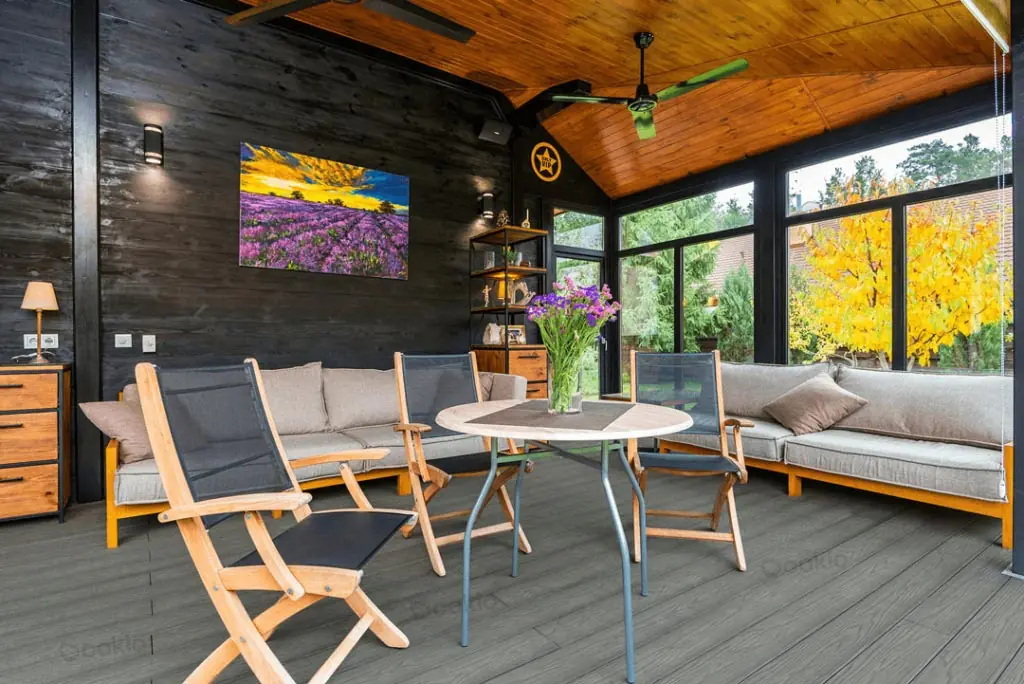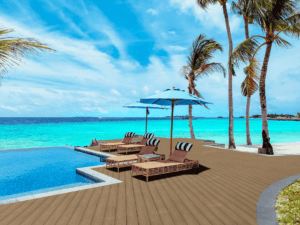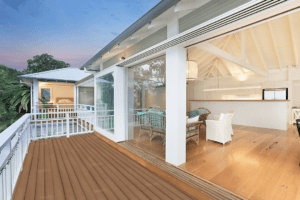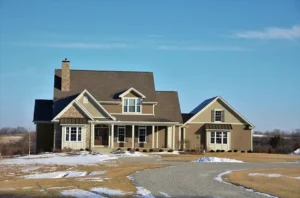What You Need to Know When Adding a Roof Over a Deck
Decks are always a good addition to any home—they’re the perfect places to relax, have fun, and enjoy a good dish and a good party. But if you’re living in a place where rain and sun do come often, you might be thinking of adding a roof over your deck.
By adding a roof to a deck, you can turn it into a haven with year-round weather protection, ensuring you can enjoy your deck without having to think about the elements getting in. But just with any house features, you need to consider all factors before you build one.
In this guide, we’ll share all you need to know when adding a roof over your deck and how you can build one without damaging your existing deck.
Why Should You Build a Roof Over a Deck?
Here are several reasons why you should build a roof over a deck:
Shade and Shelter from the Sun and Rain
Adding a roof to your deck protects it from the elements, especially from the sun and rain. This allows you to enjoy your outdoor space without getting your skin tanned and without getting your clothes wet from the rain or snow—making your deck a versatile space to enjoy year-round.
Enhancing the Aesthetic of Your Space
A deck in itself can be a good addition to your home concerning aesthetics, but adding a roof to it will add flair and depth to your home. A roofed deck creates a cohesive design, making your deck appear more cozy and inviting which complements the atmosphere of your home.
Protects You from Bugs and Insects
Building a roof over a deck offers protection not just from the elements, but also from bugs and insects that can be attracted to human body heat. This means you can enjoy a peaceful and relaxing time on your deck without having to deal with mosquitoes and flies.
Improves Your Home’s Curb Appeal and Property Value
Aside from boosting your home’s exterior design, a roof attached to your deck can significantly improve your home’s curb appeal and potential property value. This is good if you’re thinking about selling your home sooner or later.
Can Increase the Square Footage of Your Home
By adding a roof over your deck, you can theoretically increase the usable square footage of your home, since you expand your home’s living space. With the deck now serving as an extension of your living room, it can provide a space for different activities such as relaxing, dining, or entertainment.
When is the Best Time to Add a Roof Over a Deck?
The best time and season to add a roof over your deck is during mild weather and non-rainy climates, like the spring or fall to ensure an ideal construction condition. These timelines ensure your roof project is completed as soon as possible without experiencing any delays due to unfavorable weather.
A favorable weather also ensures the materials needed for your project can be delivered quickly, as most construction materials come from different places, whose delivery a bad weather can hamper.
Types of Roofing for Decks
There are various types of roofing when building a roof over a deck, but there are three types that homeowners commonly choose from, all offering different benefits and aesthetics:
Shed Roof
A shed roof has a single roof plane attached to the house that features a sloping structure to redirect rainwater away. This simple design is easier to construct than other roofing types and is versatile enough to combine well with various exterior designs.
Gable Roof
A gable roof features two sloping sides, much like the shed roofing type but with two opposite planes that form a triangular shape. This classic roofing design provides a generous ceiling space and height, which can be outfitted with an HVAC system to create a comfortable space.
Hip Roof
Compared to the shed and gable roof types, the hip roof features four sloping sides that converge at the top and resemble a square from a top architectural view. This roof type is highly resistant to winds, making it a good choice for areas with a history of cyclones and tornadoes.
Choose the Size and Style of the Roof
When choosing the size and style of the roof for your deck, you’ll need to consider a few factors to help you choose without sacrificing aesthetics and function:
Functionality
Functionality is one of the most important factors you need to consider when choosing the size and style of your roof. For example, if you need to accommodate an outdoor grill with dedicated dining areas, a larger roof is more beneficial than a small one.
Aesthetics
Function without aesthetics is incomplete, which is why you’ll need to choose a style that fully complements and completes the overall look of your deck. For example, if you prefer a modern design, the style should blend in seamlessly.
Climate
You also need to consider the local weather and climate in your area. For example, if you live near areas where cyclones typically pass from, a hip roof can offer better wind resistance. A gable roof, on the other hand, can be more suitable for areas with heavy snowfall.
Budget
Probably the most important of all, consider your budget and what it entails. Your preferred styles and sizes can impact the overall cost of your roofing, so make sure your budget can accommodate your preferences. You can also go the other way by changing your preferred style and sizes to fit right into your budget.
How to Build a Roof Over an Existing Deck
Wondering how to build a roof over an existing deck? It can be done with several easy-to-follow steps:
Pick Your Roof Material
Choosing the right roof material is the first step of the process. The right material is important to both fulfill your aesthetics and functionality concerns. You can choose between metal panels, polycarbonate sheets, or asphalt shingles.
If you have a strict budget, going for asphalt shingles can be a great option to minimize your overall roofing costs. Metal panels offer better durability and exude a modern appeal, though they may be pricier.
On the other hand, polycarbonate sheets are lightweight and offer weather resistance, though prolonged UV exposure makes them brittle and appear yellowish.
Get Required Permits (If Applicable)
Before starting the construction process, and before you buy any of the materials needed for it, check with your local building government office if you need a permit for your project. Permits are often required to facilitate better building code adherence and zoning regulations.
If possible, submit your plans early and secure all and any necessary documentation and approval from the relevant government offices before you proceed with the construction. This helps avoid legal issues and helps ensure your project is up to standards.
Prepare the Deck
Once everything is sorted out, you’ll need to prepare your deck to ensure it can support the weight and structure of the roof you’re about to install. Inspect your deck for any signs of damage and wear and tear.
Once you find issues, address them as soon as you can and reinforce the overall structure of your deck whenever possible. You should also clear the deck of debris and other furniture to facilitate a smooth installation process.
Build Roof Frame
Once the deck is prepped, building the roof frame is the next step. Start by installing the vertical columns that will support the entire weight of the roof. Once those are installed, you’ll need to attach horizontal support beams.
You’ll also need to install trusses across the beams to ensure even spacing. The frame should be level to provide a stable foundation so it can maintain the structural integrity of the roof.
Install the Roof
Once the framework is complete, begin installing the roof material of your choice. Start at the lowest point, overlapping each roof section to protect against water penetration. Asphalt shingles should have a starter course along the eaves and followed by shingles in a staggered installation.
For metal panels, they should be secured with screws, while polycarbonate sheets should be installed with the correct sealant to prevent leaks.
Install Gutters and Downspouts
To manage rainwater and prevent water penetration to both your deck and roofing system, you’ll need to install gutters and downspouts along the edges of the roof. Ensure that gutters are properly sloped downwards to facilitate efficient water drainage.
These are important to help maintain the structural integrity of the roofed deck and ensure longevity.
Paint the Roof
To cap things off, you can paint your roof to enhance its aesthetics and provide additional protection for your roofing material. Choose a product that can withstand prolonged exposure to damaging elements, such as UV, acid rain, and hard water.
Apply the paint evenly and wait for it to dry, then recoat for at least two or three times at an interval of 2 hours between coats to optimize the paint drying process and ensure the paint penetrates the material properly.
Cost to Build a Roof Over a Deck
The cost of building a roof over a deck varies widely depending on several factors such as your preferred material, roofing design, and design complexity. To give you an example, let’s say John Doe wants to add a roof to his 200-square-foot deck.
If he opts for asphalt shingles, the project cost might be around $3,000 to $5,000, including labor costs. If he opts for metal roofing, that cost could rise to $6,000 to $8,000 due to metal roofing being pricier, with the installation process being pricier too.
If he chooses polycarbonate roofing, that could cost around $4,000 to $6,000. Nonetheless, there can be additional costs for permits, gutters, and structural reinforcements which can add $500 to $1000.
Build a Roofed Deck with Oakio!
Building a roof over your deck can enhance your outdoor living space and make it more relaxing, comfortable, and appealing. Now that you know how to build one, choosing the right materials is important, including your deck.
Oakio is a leading innovator in composite wood products, including composite decking systems, and offers high-quality, industry-leading solutions that combine both style and function. Our advanced composite materials provide a sustainable solution for every decking need.
Enjoyed reading this article? Consider subscribing to our email newsletter today and receive more tips, how-tos, and exclusive deals!
Trending Reading
What Are the Differences Between the WPC Board and PVC Board?
[2024 Update] How Long Does WPC Decking Last?












